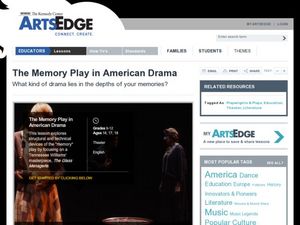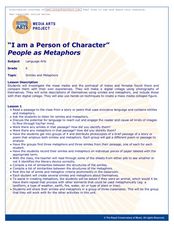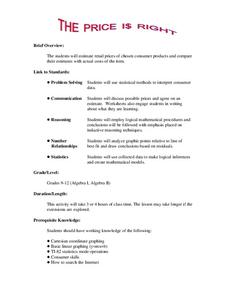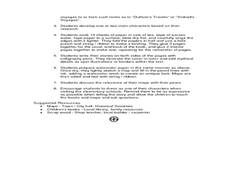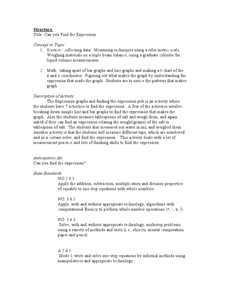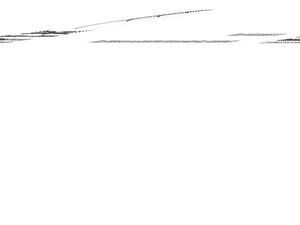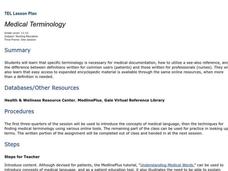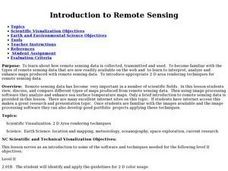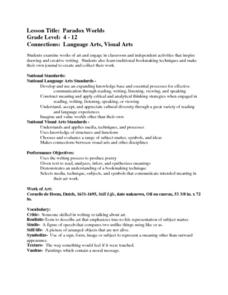Curated OER
We the People. . .
Students explore the United States Constitution. In this government instructional activity, students write newspaper editorials that reflect their opinions about Amendments.
Curated OER
Cause and effect Relationship
Students examine folk’s tales for Cause and Effect. In this literature lesson, students read "The Origin of Fire" and "The Origin of Medicine” and look for cause and effect. They use a TI Navigator to write down their findings.
Curated OER
The Memory Play in American Drama
Students take a closer look at a memory play. In this American drama lesson, students read Tennessee Williams's The Glass Menagerie and analyze it as a memory play. Students discuss the linear and non-linear aspects of the play prior to...
Curated OER
I Am a Person on Character
Sixth graders explore the portrayal of males and females in mass media. In this language arts lesson, 6th graders create a digital collage and write a description about themselves using similes and metaphors.
Curated OER
The Price Is Right
Students create a list of products with estimated prices. In this algebra instructional activity, students learn to write equations using variables. They match their created list with that of actual products and compare their...
Curated OER
Rising Tensions Over The Nile River Basin
Students analyze the concept of global commons dilemma. For this investigative lesson students read an article on the Middle East Media Research Institute and answer questions accordingly.
Curated OER
What Do Monarch Caterpillars Eat?
Learners record and analyze what types of food monarch caterpillars will eat.
Curated OER
Fossil Fuels vs. Alternative Fueling Systems
Fourth graders brainstorm the differences between the fossil fuels that people use in their transportation now and what they could use to minimize greenhouse gas emissions. They use a variety of techniques from webquests to writing...
Curated OER
The Sexton and the Compass
Students evaluate how movement patterns create and affect interdependence. They analyze the interactions within and between regions and engage in artistic inquiry, exploration, and discovery in collaboration with others. They design...
Curated OER
Human Sexuality Unit
Eighth graders determine how mass media influences human sexuality by looking at advertisements for their sexual content and how the ads affect their decision making. After evaluating the advertisements in a PowerPoint presentation they...
Curated OER
Can you Find the Expression
Pupils collect data from measurements and weights for this experiment. In this algebra lesson, students analyze graphs they create form their data to find the expression representing the data. They label which graph provided the best...
Curated OER
Brick by Brick
Students use their previous knowledge of the Pyramid Lake War to help them analyze different primary sources of Fort Churchill. In this source analysis lesson, students work in groups to study 4 different primary sources for Fort...
Curated OER
How Does A Person Cope With Life Changing Events?
Fourth graders explore the concept of conflict mediation. In this coping skills lesson, 4th graders discover conflict mediation skills that may be used to resolve conflict. Students also learn techniques to reduce stress.
Curated OER
Google Earth on the Range
Eighth graders use Google Earth to study the landscape of Utah. In this Utah landscape lesson, 8th graders view landscape photos and work in partners to analyze the pictures. Students write a paragraph that describes the landscape and...
Curated OER
Medical Terminology
Pupils analyze specific medical terminology. In this medical terminology lesson, students research medical terminology and write properly grammatical paragraphs on each word including the scientific term, nursing and general...
Curated OER
Ad Creation from Admongo.gov
Young scholars explore consumerism by completing a worksheet. For this advertisement lesson, students discuss the relationship between the media and consumerism while analyzing advertisements from the Internet, magazines and T.V. Young...
Curated OER
Critiquing A Speech Contestant
What makes a speech effective? Middle schoolers critique a speech for content and presentation. They view a video of a middle school student presenting an informational speech, They outline the content of the speech and critique the...
Curated OER
Teaching a Short Story
Young scholars work in small groups and prepare an analysis of a short story to be presented to their peers. They research the story and create a handout or a visual aid that cites sources of information and summarizes the main points...
Curated OER
Political Cartoons: Symbols of Fear
Students brainstorm a list of reasons for fear, hate, and mistrust. They assess political cartoons for symbols, messages, and points of view. After researching cartoons, they choose one that best depicts fear or hatred and write...
Curated OER
Prize-Winning Profiles
Students read a profile of Luiz Inácio da Silva, the currently favored presidential candidate in Brazil. They use this article as a model for writing their own profiles of noteworthy people recently featured in the news.
Curated OER
Introduction to Remote Sensing
Students view, discuss, and compare different types of maps produced from remote sensing data. They use image processing software to analyze and enhance sea surface temperature maps.
Curated OER
Paradox Worlds
Students view and analyze "Still Life," by Cornelis de Heem. They answer discussion questions about the painting, write similes, discuss symbolism, create a still life sketch, and create a paint box poem.
Curated OER
Japanese Objects as Cultural Artifacts: A Model Lesson Using Textiles
Students complete a unit on the cultural significance of textiles in the Japanese culturre. They analyze cotton, line, silk, and wool fabrics, examine various fabric creation and decoration techniques, select an object and write a...
Curated OER
Model Lesson Plans
Ninth graders study how to identify and analyze the use of figurative language used in selected poems, short stories or other pieces of prose chosen by the teacher. These pieces of literature represent at least two pieces by one writer...


